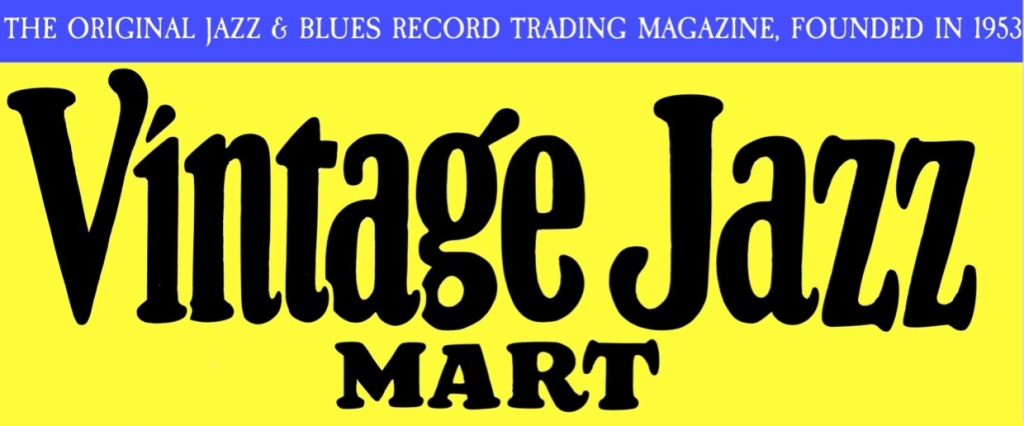I have a sentimental attachment to the music issued on the Black and White label in the Forties. My father, a motion-picture projectionist, spent his working life “in the booth.” In addition to keeping the picture and sound on the screen, the projectionist was expected to fill the theatre with music during intermissions. In my childhood, theatres were making the transition from turntables in the booth that played 78s, and my father would occasionally liberate a disc he thought his music-mad son would like.
He told a funny story of playing Bill Haley and the Comets’ ROCK AROUND THE CLOCK, not paying much attention to it until the manager called him in a frenzy to take the ——- ——– record off because of what the kids were doing to the theatre. But I digress.
One of the records he brought home was this 12″ disc:
The other side is LADY BE GOOD, and it made a considerable impression. (“BROWN GAL” is a reference to her composition and 1936 Decca recording of the same name.)
Later on, when I began to actively collect records, I saw that so many issues on this label were rewarding and unusual combinations of musicians: Joe Marsala (with Chuck Wayne and Dizzy Gillespie!), Joe Thomas, Art Tatum, Leo Watson, Nat Jaffe, Art Hodes, Pee Wee Russell, Sidney Bechet, an imperishable session with Rod Cless, Sterling Bose, James P. Johnson, and Pops Foster; Barney Bigard, Cliff Jackson, Erroll Garner, Teddy Bunn, Leo Watson, Brad Gowans, Oscar Pettiford, Ivie Anderson, Helen Humes, Vic Dickenson, Buck Clayton, Red Rodney, Howard McGhee, Irving Ashby, Ulysses Livingston, Lucky Thompson, and two dozen others. But almost all of them were simply listings in discographies.
Occasionally a session, transferred from worn discs, would surface on a European anthology, and a supermarket-label, TOPS, issued a compilation called JAZZ GREATS with the unequalled combination of no data and a yearning young woman portrayed on the cover. Still later, perhaps into this century, a short series of CDs appeared on the Pickwick label, anthologies assembled with hope but little logic. And there it stood.
To be fair, the story is not unique to this label. Search for a coherent reissue of many of the small labels that proliferated in the Forties, and you have to hope for the best. Ownership rights are tangled or on the ocean floor, and most — if not all — reissue companies are not relying on an audience thirsting for invaluable music.
But what is that I hear, coming over the hill? The drums and trumpets of Mosaic Records, once again, bringing heart, valor, enthusiasm, and exactitude to a worthy project.
The facts? 243 tracks, spanning 1942 to 1949, primarily studio performances with a few concert ones for leavening; New York, Chicago, California (mostly Los Angeles), eleven CDs, price $179.00 plus shipping. I’ll let you do the math, but just for a thrill, I looked up the Lil Armstrong disc I began with on eBay, and the least expensive version is $23.66 here, assuming of course you have the turntable and stylus to play it properly. You could also look for some of these records on YouTube — happy hunting! — but although the Tube is priceless for certain things, music tends to transfer off-pitch, and some of the collectors (heartfelt as they are) have makeshift methods of getting the music to us.
No, the Mosaic Records issues remain — a cliche but no less true — the gold standard. They are also limited editions, so one cannot really say, “I’ll buy that set in _______ years when and if my ship comes in,” because then the only place to purchase it will be charging a premium price, if, indeed, it can be found.
But enough words about money. How about some sound(s)? Here you can hear Charlie Ventura, Red Rodney, Willie Smith, Barney Kessel, Billy Hadnott, and Nick Fatool play ‘S’WONDERFUL; Jack McVea; Gerald Wilson; Joe Marsala with Dizzy Gillespie, Cliff Jackson, Chuck Wayne, Irving Lang, Buddy Christian play MY MELANCHOLY BABY; Willie “the Lion” Smith, Max Kaminsky, Rod Cless, Frank Orchard, Jack Lesberg, Mack McGrath play BUGLE CALL RAG. Delightful performances.
And the sound is translucent; you hear all the nuances, thanks to lovely transferring from the best original sources by Andreas Meyer and Nancy Conforti of Swan Studios, who have outdone themselves. Perhaps you knew that small labels of this period suffered because shellac was rationed, so many treasured 78s were pressed on a mixture of substances including horse manure, as my expert friend Matthew Rivera tells us.
On that same page, a detailed discography, and, of course, a place to buy the set.
The set has photographs — rare and stunning, beautifully reproduced, and essays by Billy Vera, Scott Wenzel, and the Eminence Dan Morgenstern. Dan’s notes are characteristically witty, heartfelt, and candid. Who else do we have who was in New York in 1947, saw, spoke with, and befriended many of the musicians on this set? Priceless.
It’s a valuable swinging human archive. And you deserve a present, don’t you?
May your happiness increase!




